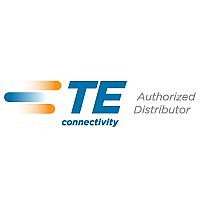1-45160-0 Tyco Electronics, 1-45160-0 Datasheet - Page 3

1-45160-0
Manufacturer Part Number
1-45160-0
Description
TOOL HEAD CRIMP 22-16AWG P-G
Manufacturer
Tyco Electronics
Series
Plasti-Grip™r
Datasheet
1.1-45160-0.pdf
(6 pages)
Specifications of 1-45160-0
Connector Type
Terminals and Splices
Crimp Handle
1213563-1, 1213804
Crimp Or Cable Size
16-22 AWG
Lead Free Status / RoHS Status
Not applicable / Not applicable
4.2. Insulation Crimp Adjustment
The insulation crimping section of the crimping head
has three positions: 1—Tight; 2—Medium; and
3—Loose.
5. CRIMP INSPECTION
For detailed crimp inspection requirements, refer to
Tyco Electronics Application Specification 114–2161.
Rev
1. Insert insulation adjustment pins in Position 3.
See Figure 4.
NOTE
2. Place splice in crimping jaws, as shown in
Figure 3.
3. Insert unstripped wire only into the
insulation barrel of the splice. See Figure 3.
4. Crimp splice as described in Paragraph 4.1.
5. Remove splice. Bend wire forward and then
backward. The splice should retain its grip on the
wire. If the wire pulls out, reposition the insulation
adjustment pins in the next tighter position and
repeat crimping procedure.
6. Repeat adjustment as necessary until desired
insulation grip is obtained. DO NOT use a tighter
setting than required.
Positions
A
Insulation
Adjustment
Pin(s)
(Ref)
Always place both adjustment pins in the same
position. See Figure 4.
Figure 4
PLASTI-GRIP Butt Splice Crimping Heads
6. MAINTENANCE AND INSPECTION
Tyco Electronics recommends that a maintenance
and inspection program be performed periodically to
ensure dependable and uniform terminations. The
crimping head should be inspected once a month.
Frequency of inspection should be adjusted to suit
your requirements through experience. Frequency of
inspection depends on:
Each crimping head is thoroughly inspected before
packaging. Since there is the possibility of crimping
head damage during shipment, new crimping heads
should be inspected immediately upon arrival at your
facility.
6.1. Daily Maintenance
Tyco Electronics recommends that each operator be
responsible for the following steps of daily
maintenance:
6.2. Periodic Inspection
Regular inspections should be performed by quality
control personnel. A record of scheduled inspections
should remain with the crimping heads or be supplied
to supervisory personnel responsible for the crimping
heads. Though recommendations call for at least one
inspection a month, the frequency should be based
on amount of use, working conditions, operator
training and skill, and your established company
policies. These inspections should include a visual
DANGER
DANGER
1. The care, amount of use, and handling of the
crimping head.
2. The type and size of the product crimped.
3. The degree of operator skill.
4. The presence of abnormal amounts of dust and
dirt.
5. Your own established standards.
1. Remove dust, moisture, and other contaminants
with a clean, soft brush, or a lint–free cloth. Do
NOT use objects that could damage the head.
2. Make sure that all pins, rings, and other
components are in place and secure.
3. Make certain all surfaces are protected with a
thin coat of any good SAE 20 motor oil. Do NOT oil
excessively.
4. When the head assembly is not in use, store it
in a clean dry, area.
To avoid personal injury, ALWAYS disconnect the
battery from the tool before performing
maintenance or inspection.
To avoid personal injury and damage to the tool,
make sure quick pins are properly inserted.
408-10030
3
of 6





